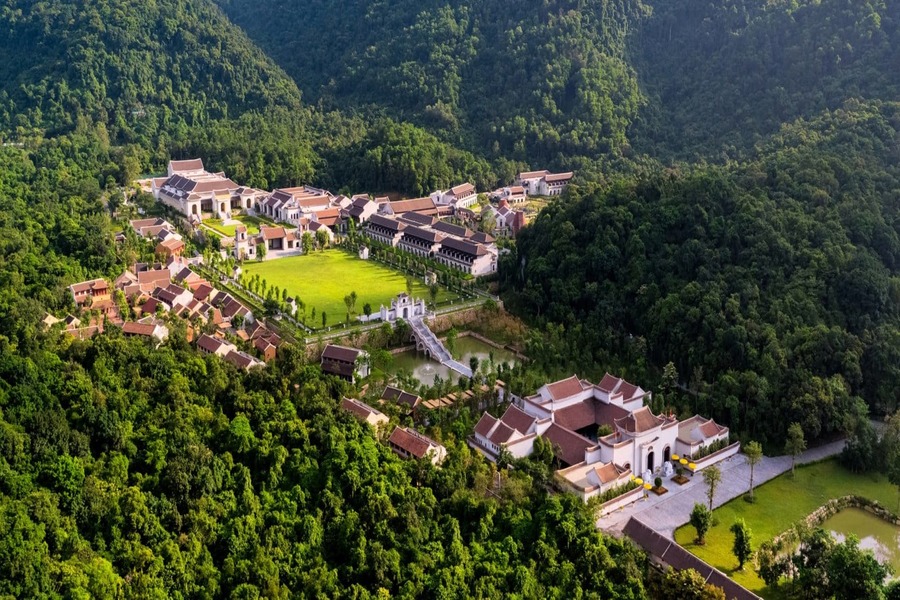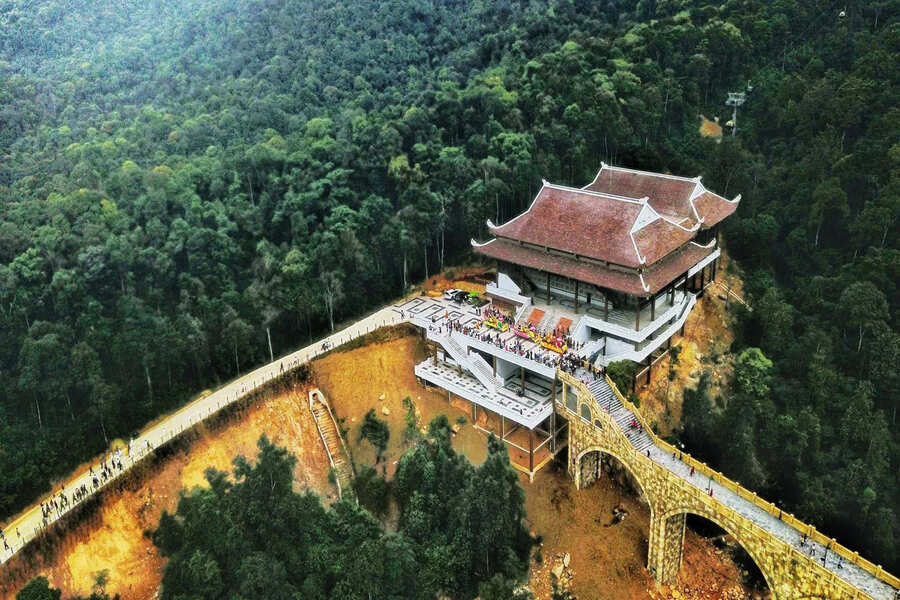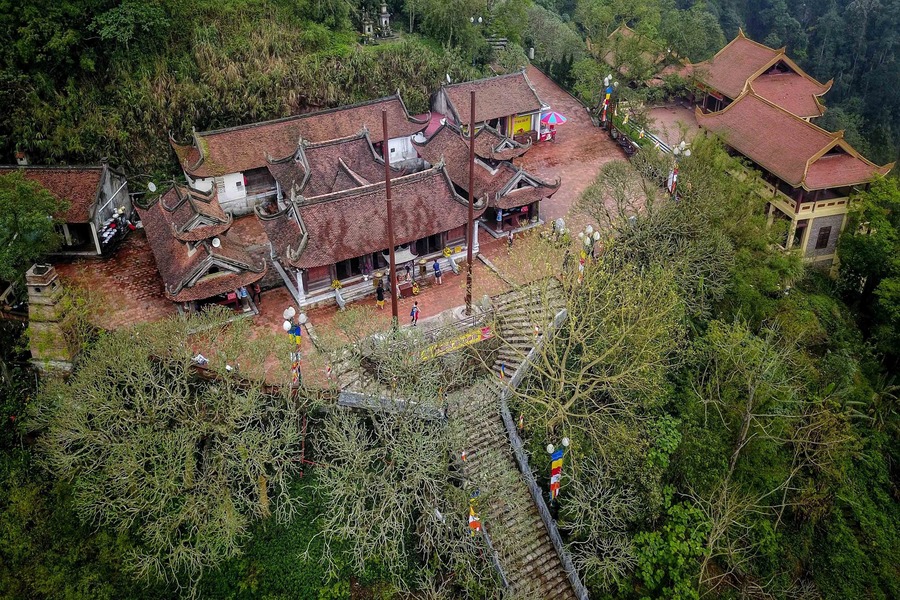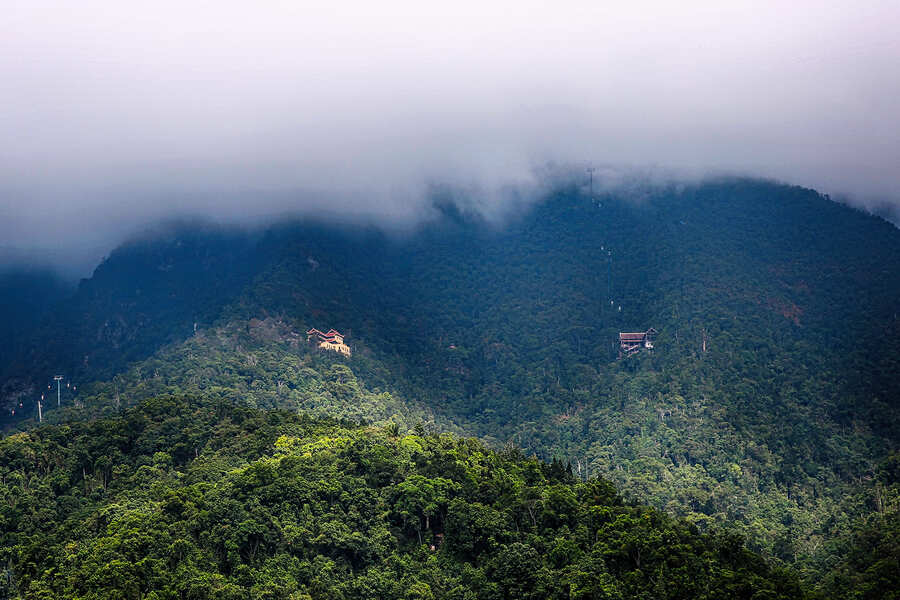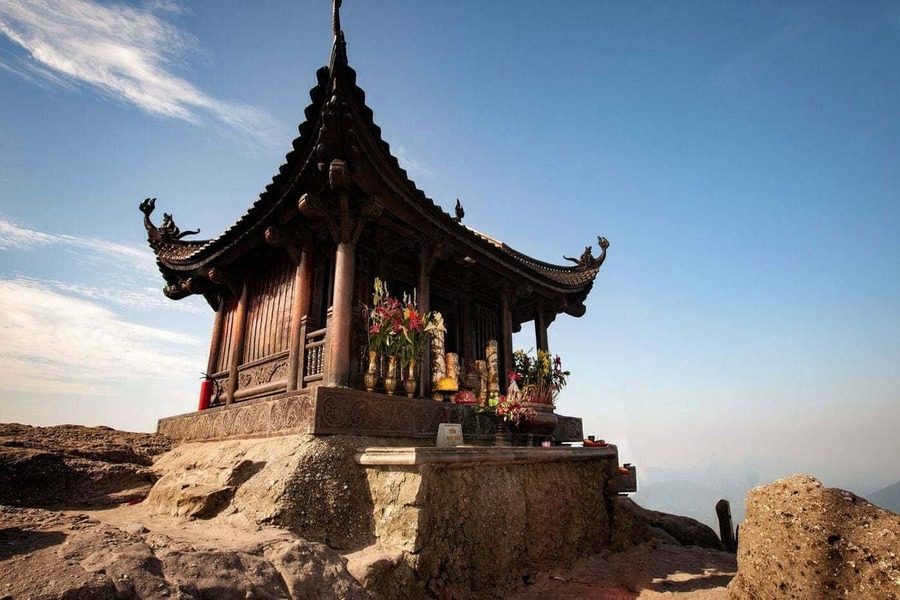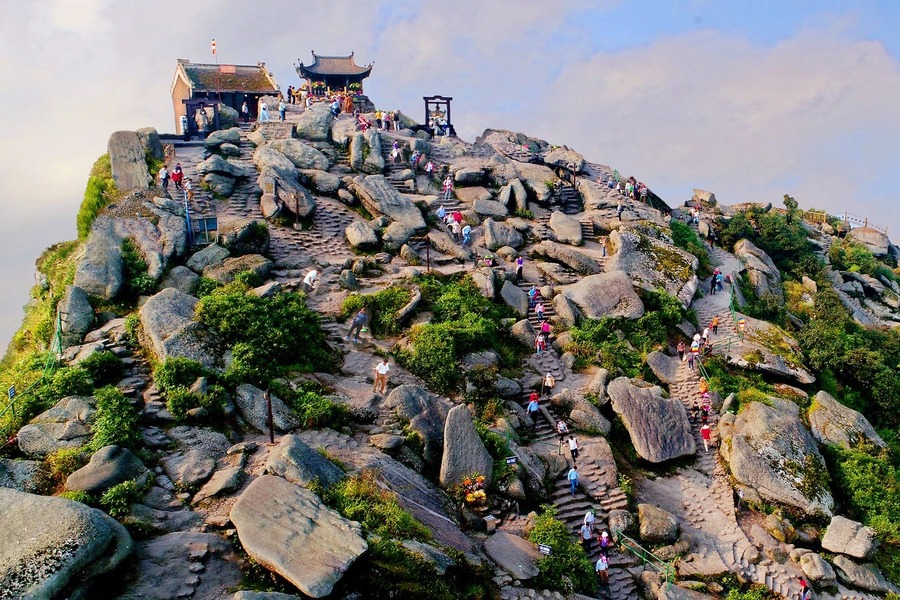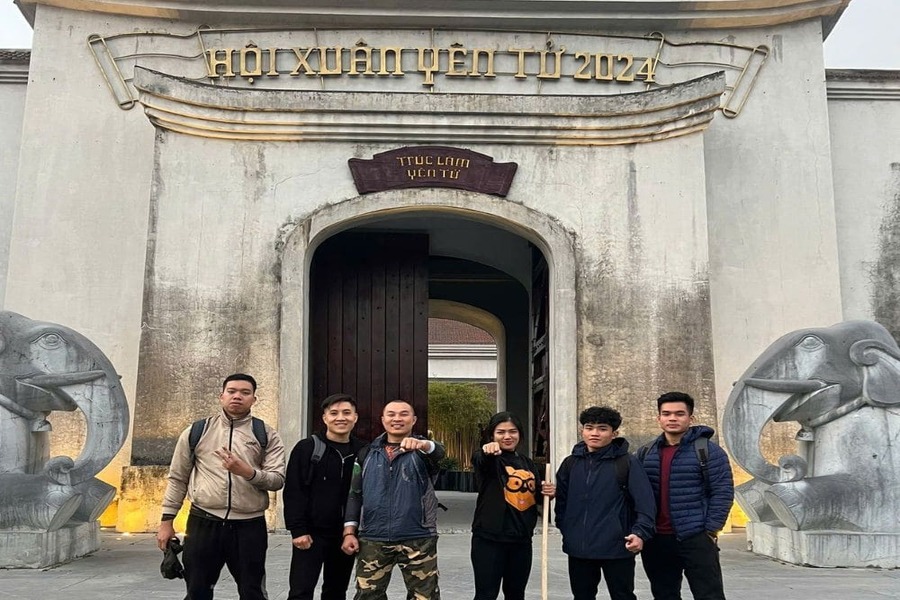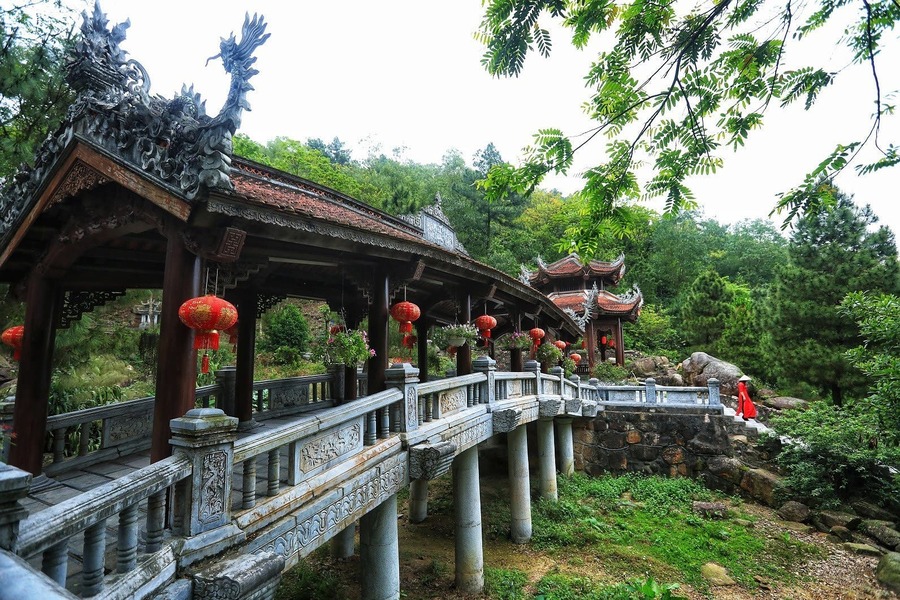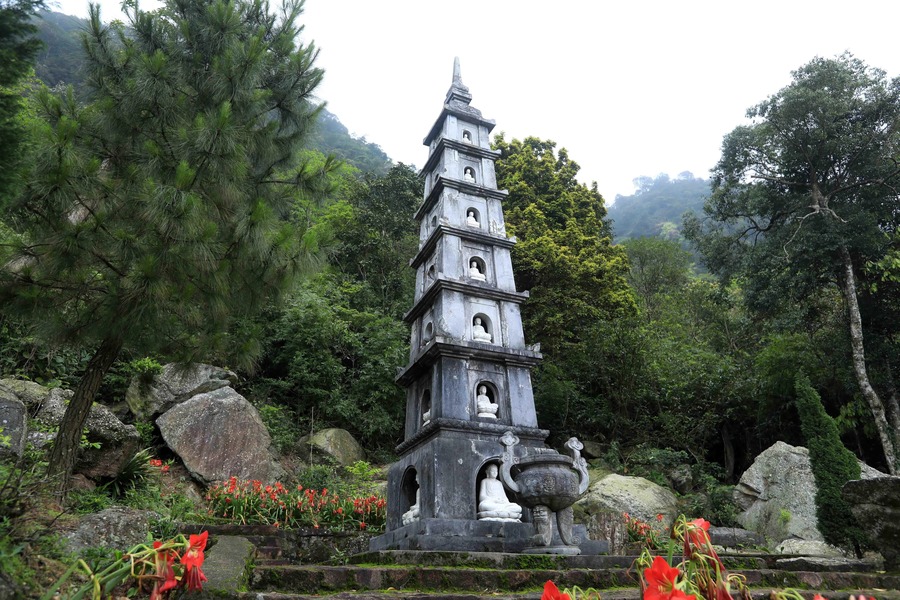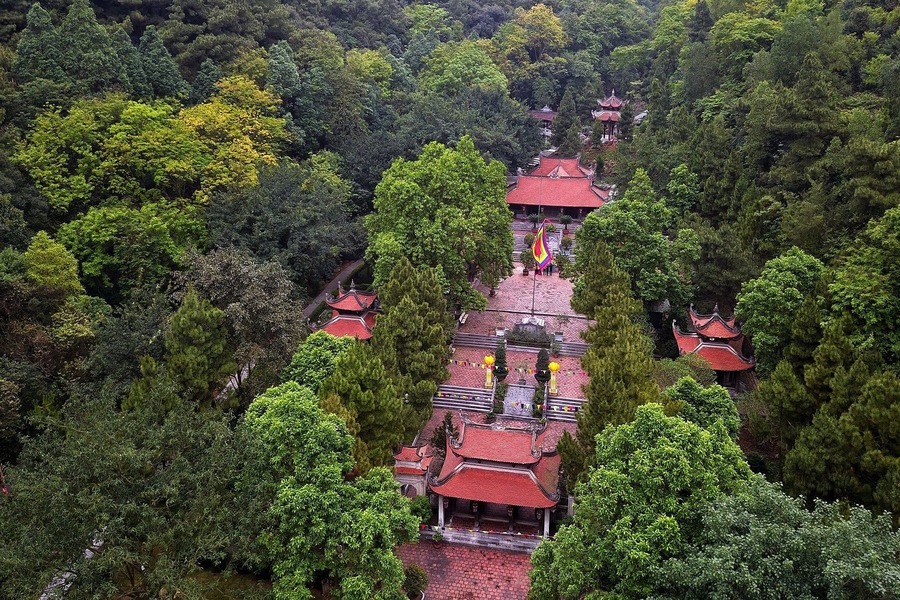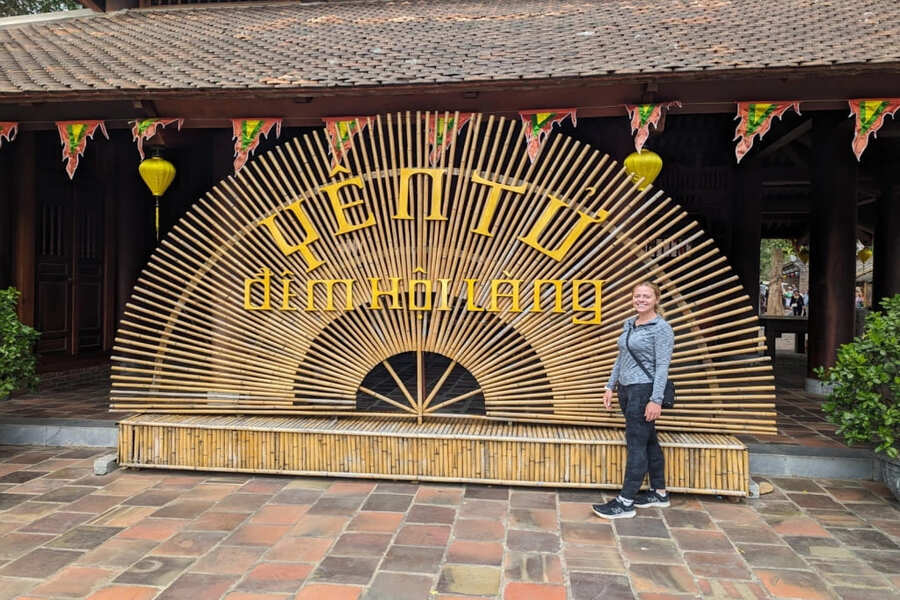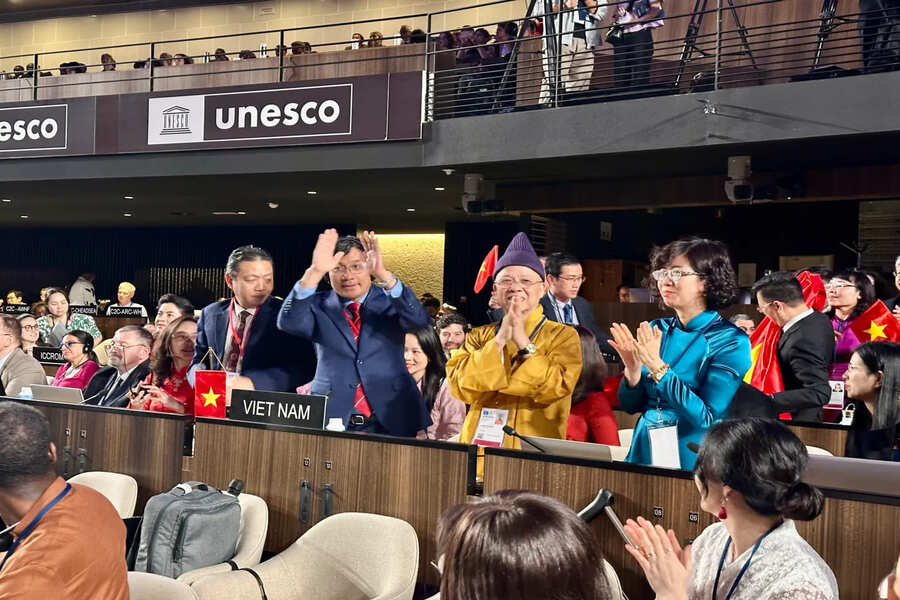Discover why Vietnam celebrates nine world-class heritage sites in 2025, with the Yen Tu – Vinh Nghiem – Con Son – Kiep Bac Complex newly recognized as a UNESCO World Cultural Heritage site. Explore Vietnam’s rich cultural legacy, from Ha Long Bay to Hue, with Go Vietnam Tours in this article!
Vietnam, a land of vibrant culture and breathtaking landscapes, proudly celebrates nine world-class heritage sites in 2025, as recognized by UNESCO for their global cultural and natural significance. The recent inscription of the Yen Tu – Vinh Nghiem – Con Son – Kiep Bac Complex as Vietnam’s ninth UNESCO World Cultural Heritage site on July 12, 2025, marks a historic milestone, making it the country’s second inter-provincial heritage site after Ha Long Bay – Cát Bà Archipelago. Spanning Quảng Ninh, Bắc Ninh, and Hải Phòng, this complex showcases the profound spiritual legacy of Trúc Lâm Zen Buddhism, founded by Emperor Trần Nhân Tông. With over 18 million visitors annually, according to the Vietnam National Administration of Tourism, Vietnam’s UNESCO sites, from the ancient charm of Hoi An to the majestic karsts of Phong Nha, draw travelers worldwide. Explore this Complex to plan your best Vietnam tours package!
Why Vietnam’s Nine UNESCO World Heritage Sites Are a Must-Visit
Vietnam’s nine world-class heritage sites offer a unique blend of cultural, historical, and natural wonders, making Vietnam travel a bucket-list experience in 2025. These sites, recognized by UNESCO, reflect Vietnam’s rich history, spiritual depth, and environmental beauty. Here’s why they stand out:
- Cultural Significance: Sites like the Yen Tu – Vinh Nghiem – Con Son – Kiep Bac Complex and Hue Monuments highlight Vietnam’s ancient traditions and philosophies.
- Natural Beauty: Ha Long Bay and Phong Nha – Ke Bang National Park boast stunning landscapes, from limestone karsts to ancient caves.
- Historical Depth: The Thăng Long Imperial Citadel and Ho Dynasty Citadel showcase Vietnam’s architectural ingenuity and dynastic legacy.
- Tourism Growth: Sites like Tràng An attracted over 6 million visitors in 2019, driving Vietnam’s tourism economy.
The recognition of the Yen Tu – Vinh Nghiem – Con Son – Kiep Bac Complex in 2025 reinforces Vietnam’s commitment to preserving its heritage, as affirmed by Deputy Minister Nguyễn Minh Vũ. This guide explores Vietnam’s nine UNESCO sites, with a focus on the newly inscribed complex, offering Vietnam travel tips to plan your visit.
Overview of Vietnam’s Nine World-Class Heritage Sites
As of July 2025, Vietnam boasts nine world-class heritage sites, including six cultural, two natural, and one mixed site, placing it second in Southeast Asia for UNESCO recognitions. Below, we dive into each site, highlighting the Yen Tu – Vinh Nghiem – Con Son – Kiep Bac Complex and its significance.
Yen Tu – Vinh Nghiem – Con Son – Kiep Bac Complex: Vietnam’s Newest UNESCO World Cultural Heritage
Site Description: Recognized on July 12, 2025, at the 47th UNESCO World Heritage Committee session in Paris, the Yen Tu – Vinh Nghiem – Con Son – Kiep Bac Complex is Vietnam’s ninth UNESCO site and its second inter-provincial heritage, spanning Quảng Ninh, Bắc Ninh, and Hải Phòng. Covering a core area of 525.75 hectares and a buffer zone of 4,380.19 hectares, this complex is a sacred pilgrimage center rooted in Trúc Lâm Zen Buddhism, founded by Emperor Trần Nhân Tông in the 13th century.
Cultural Significance:
- Trúc Lâm Zen Buddhism: Established by Trần Nhân Tông, the only Asian monarch to renounce his throne for monastic life, this Zen sect integrates Mahayana Buddhism, Confucianism, Taoism, and Vietnamese beliefs, promoting peace, tolerance, and harmony with nature.
- Key Sites: The complex includes 12 locations, such as Đồng Pagoda on Yên Tử Mountain, Vĩnh Nghiêm Pagoda, and the Côn Sơn – Kiếp Bạc relic sites, featuring temples, hermitages, and pilgrimage routes.
- Historical Impact: It reflects the harmonious blend of state, religion, and people, shaping Vietnam’s national identity through centuries of spiritual practice.
Why Visit: The complex draws millions for the annual Yên Tử Festival (10th to end of the third lunar month), offering a spiritual journey amidst sacred landscapes. Its UNESCO recognition highlights Vietnam’s commitment to heritage preservation, as noted by Deputy Minister Hoàng Đạo Cương.
Travel Tip: Join a guided pilgrimage tour with Go Vietnam Tours to explore Yên Tử’s serene trails and learn about Trúc Lâm Zen. Download our free travel checklist for planning your visit.
Ha Long Bay – Cát Bà Archipelago: A Natural Wonder
Site Description: Recognized in 1994 and expanded in 2023, Ha Long Bay – Cát Bà Archipelago in Quảng Ninh and Hải Phòng is a UNESCO World Natural Heritage site known for its emerald waters and 1,600 limestone islands.
Highlights:
- Stunning karst formations and caves like Sung Sot.
- Rich biodiversity, recognized under UNESCO criteria for geomorphology and ecological value.
- Popular for cruises, kayaking, and eco-tourism.
Travel Tip: Book a Ha Long Bay cruise with Go Vietnam Tours for a sustainable experience. Visit in March-April for mild weather (20-28°C).
Complex of Hue Monuments: Imperial Grandeur
Site Description: Inscribed in 1993, the Hue Monuments in Thừa Thiên Huế were the heart of Vietnam’s Nguyen Dynasty (1802-1945), recognized for their cultural and architectural significance.
Highlights:
- Imperial Citadel, royal tombs, and pagodas like Thien Mu.
- A hub of Vietnamese culture, recently recognized for its gastronomy.
- Annual Hue Festival showcasing traditional arts.
Travel Tip: Visit in January-April (20-25°C) and book a Perfume River tour with Go Vietnam Tours to explore Hue’s heritage.
Hoi An Ancient Town: Timeless Charm
Site Description: Recognized in 1999, Hoi An in Quảng Nam is a UNESCO World Cultural Heritage site, known for its well-preserved trading port and lantern-lit streets.
Highlights:
- Japanese Covered Bridge and Tan Ky House.
- Vibrant night markets and tailoring shops.
- Cycling tours to Tra Que Vegetable Village.
Travel Tip: Visit in February-May (25-30°C) and join a cooking class with Go Vietnam Tours to learn cao lau.
My Son Sanctuary: Cham Legacy
Site Description: Inscribed in 1999, My Son Sanctuary near Da Nang is a UNESCO World Cultural Heritage site featuring Cham temple towers from the 4th to 13th centuries.
Highlights:
- Hindu-inspired architecture in a mountain-ringed valley.
- A testament to cultural exchange in ancient Asia.
- Ongoing restoration efforts supported by UNESCO.
Travel Tip: Visit early morning to avoid crowds and book a guided tour with Go Vietnam Tours.
Phong Nha – Ke Bang National Park: Ancient Caves
Site Description: Recognized in 2003 and expanded in 2015, Phong Nha – Ke Bang in Quảng Bình is a UNESCO World Natural Heritage site with 400-million-year-old karst formations.
Highlights:
- Caves like Son Doong, the world’s largest.
- Biodiversity and geological significance.
- Adventure tours for caving and trekking.
Travel Tip: Visit in April-September (20-30°C) and book eco-tours with Go Vietnam Tours for sustainable exploration.
Thăng Long Imperial Citadel: Hanoi’s Historical Heart
Site Description: Inscribed in 2010, this Hanoi site from the 11th-century Ly Dynasty marks Vietnam’s independence as Dai Viet.
Highlights:
- Archaeological relics and royal structures.
- Opened to the public in 2004, coinciding with Hanoi’s 1000th anniversary.
- Cultural events and exhibitions.
Travel Tip: Visit in October-November (20-25°C) and explore with a guide from Go Vietnam Tours.
Ho Dynasty Citadel: Stone Fortress
Site Description: Recognized in 2011, this Thanh Hóa site is a rare stone citadel from the 14th century, showcasing Vietnamese craftsmanship.
Highlights:
- Intact arched gateways and rural views.
- A symbol of the short-lived Ho Dynasty.
- Quiet, less-crowded site.
Travel Tip: Visit in March-April and combine with a countryside tour via Go Vietnam Tours.
Tràng An Scenic Landscape Complex: Mixed Heritage
Site Description: Inscribed in 2014, Tràng An in Ninh Bình is Vietnam’s first mixed UNESCO site, blending cultural and natural elements.
Highlights:
- Karst peaks, valleys, and ancient temples.
- Archaeological evidence of 30,000-year-old human habitation.
- Boat tours through scenic waterways.
Travel Tip: Visit in January-April (20-25°C) and book a boat tour with Go Vietnam Tours for an immersive experience.
Yen Tu Complex Named Vietnam’s 9th UNESCO World Heritage Site
The Yen Tu – Vinh Nghiem – Con Son – Kiep Bac Complex is Vietnam’s newest UNESCO World Cultural Heritage site, celebrated for its spiritual and cultural significance. Here’s a deeper look at why it’s a must-visit in 2025.
Historical and Spiritual Significance
Founded in the 13th century by Emperor Trần Nhân Tông, the complex is the birthplace of Trúc Lâm Zen Buddhism, a unique Vietnamese Zen sect that integrates Mahayana Buddhism, Confucianism, Taoism, and indigenous beliefs. Trần Nhân Tông, who abdicated to become a monk, established a philosophy of peace, compassion, and harmony with nature, shaping Vietnam’s spiritual identity. The complex’s 12 locations, including Đồng Pagoda on Yên Tử Mountain and Vĩnh Nghiêm Pagoda, feature temples, hermitages, stone steles, and woodblocks, reflecting centuries of Buddhist practice.
Key Attractions in the Complex
- Yên Tử Mountain (Quảng Ninh): Home to Đồng Pagoda, a sacred pilgrimage site reachable by cable car or a scenic hike. The annual Yên Tử Festival (late January to April) attracts millions.
- Vĩnh Nghiêm Pagoda (Bắc Ninh): A major Buddhist center with historical woodblocks and serene architecture.
- Côn Sơn – Kiếp Bạc (Hải Phòng): Relic sites tied to Trần Dynasty heroes and spiritual traditions, offering tranquil landscapes.
Why It’s a UNESCO World Cultural Heritage
The complex was inscribed for its:
- Cultural Integration: A unique blend of religion, state, and community, fostering Vietnamese identity.
- Sustainable Legacy: Continuous rituals and pilgrimages demonstrate its enduring global relevance.
- Natural Harmony: The sacred landscape reflects a deep connection with nature, aligning with UNESCO’s goals of peace and sustainability.
Planning Your Visit
- Best Time: Visit during the Yên Tử Festival (late January to April) for vibrant cultural events or October-November for cooler weather (20-25°C).
- How to Get There: Fly to Hanoi (1.5 hours from Hue, $40-$80), then drive 2 hours to Yên Tử. Use Grab ($1-$3) or book transfers with Go Vietnam Tours.
- What to Do: Join a pilgrimage hike, meditate at Vĩnh Nghiêm Pagoda, or explore Côn Sơn’s relics. Book guided tours for cultural insights.
- Where to Stay: Stay in Quảng Ninh (e.g., Halong Bay Hotel, $30-$50/night) or Bắc Ninh homestays ($10-$20/night).
Travel Tip: Book a Trúc Lâm Zen tour with Go Vietnam Tours to experience the complex’s spiritual depth. Download our free travel checklist for itinerary planning.
Vietnam’s Commitment to Heritage Preservation
Vietnam’s nine world-class heritage sites reflect its dedication to preserving cultural and natural treasures, as evidenced by the 2024 Cultural Heritage Law passed on November 23, 2024. The nomination of the Yen Tu – Vinh Nghiem – Con Son – Kiep Bac Complex involved years of research, restoration, and coordination among Quảng Ninh, Bắc Ninh, and Hải Phòng, led by the Ministry of Culture, Sports and Tourism. Prime Minister Phạm Minh Chính’s letter to UNESCO underscored Vietnam’s commitment, earning unanimous support from the World Heritage Committee.
This recognition enhances Vietnam’s global standing and promotes sustainable tourism, as noted by Vice Chairwoman Nguyễn Thị Hạnh of Quảng Ninh. By booking with Go Vietnam Tours, you support eco-friendly tours that preserve these sites for future generations.
Practical Vietnam Travel Tips for Visiting Vietnam UNESCO Sites
To explore Vietnam’s nine world-class heritage sites, follow these Vietnam travel tips for a safe and enriching experience:
Planning Your Trip
- Best Time to Visit:
- North (Yên Tử, Ha Long Bay, Hanoi): March-April or October-November (20-25°C).
- Central (Hoi An, Hue, My Son): February-May (25-30°C).
- South (Ho Chi Minh City for connections): December-April (25-32°C).
- Getting Around:
- Flights: Domestic flights (Vietnam Airlines, Vietjet) connect Hanoi, Da Nang, and Hue ($30-$100).
- Trains: Reunification Express links Hanoi to Hue ($20-$50).
- Buses: Sleeper buses ($10-$20) for budget travel.
- Ride-Hailing: Use Grab ($1-$3) or book transfers with Go Vietnam Tours.
- Budgeting: A 10-day trip costs $400-$700:
- Accommodation: $100-$200 (hostels $5-$15/night, hotels $20-$40/night).
- Transport: $100-$150 (flights, buses, Grab).
- Activities: $100-$200 (tours, entry fees).
- Food: $50-$100 (street food, restaurants).
- Miscellaneous: $50-$100 (SIM, souvenirs).
Travel Tip: Download our free travel checklist from Go Vietnam Tours for budgeting and itinerary tips.
Safety and Cultural Tips
- Secure Valuables: Use a money belt in crowded sites like Hoi An’s night market to avoid petty theft.
- Dress Respectfully: Cover shoulders and knees at religious sites like Yên Tử or Hue’s pagodas.
- Stay Connected: Get a Viettel SIM ($5-$10 for 5GB) or eSIM (Airalo) for navigation.
- Learn Phrases: Use “xin chao” (hello) or “cam on” (thank you) to connect with locals.
- Book Reputable Tours: Choose licensed operators like Go Vietnam Tours to avoid Vietnam travel scams.
Travel Tip: Download our free travel tips PDF for safety and cultural etiquette advice.
Sustainable Tourism
- Eco-Friendly Choices: Book electric vehicle tours (e.g., Xanh SM taxis) with Go Vietnam Tours.
- Support Locals: Buy souvenirs from artisans in Hoi An or Yên Tử’s local markets.
- Reduce Waste: Use reusable water bottles (e.g., LifeStraw) to minimize plastic use.
Visit Vietnam’s Nine World-Class Heritage Sites in 2025
Vietnam’s nine world-class heritage sites offer a journey through history, spirituality, and nature, with the Yen Tu – Vinh Nghiem – Con Son – Kiep Bac Complex adding a new dimension in 2025. These sites not only showcase Vietnam’s cultural richness but also drive sustainable tourism, as emphasized by Assoc. Prof. Dr. Lê Thị Thu Hiền. Whether you’re hiking Yên Tử’s sacred trails, cruising Ha Long Bay, or wandering Hoi An’s ancient streets, Vietnam travel promises unforgettable memories. With Go Vietnam Tours, you’ll explore these treasures with expert guides and eco-conscious tours.
Vietnam proudly celebrates nine world-class heritage sites in 2025, with the Yen Tu – Vinh Nghiem – Con Son – Kiep Bac Complex joining the UNESCO list as a testament to its spiritual and cultural legacy. From the historic Hue Monuments to the natural splendor of Phong Nha, these sites make Vietnam travel a global highlight. At Go Vietnam Tours, we’re passionate about sharing Vietnam’s heritage safely and sustainably. Download our free travel checklist or travel tips PDF to plan your journey through Vietnam’s UNESCO sites. Ready to explore? Contact Go Vietnam Tours or share your travel plans in the comments below!

